How Self-Service Tools Enhance Efficiency and Satisfaction
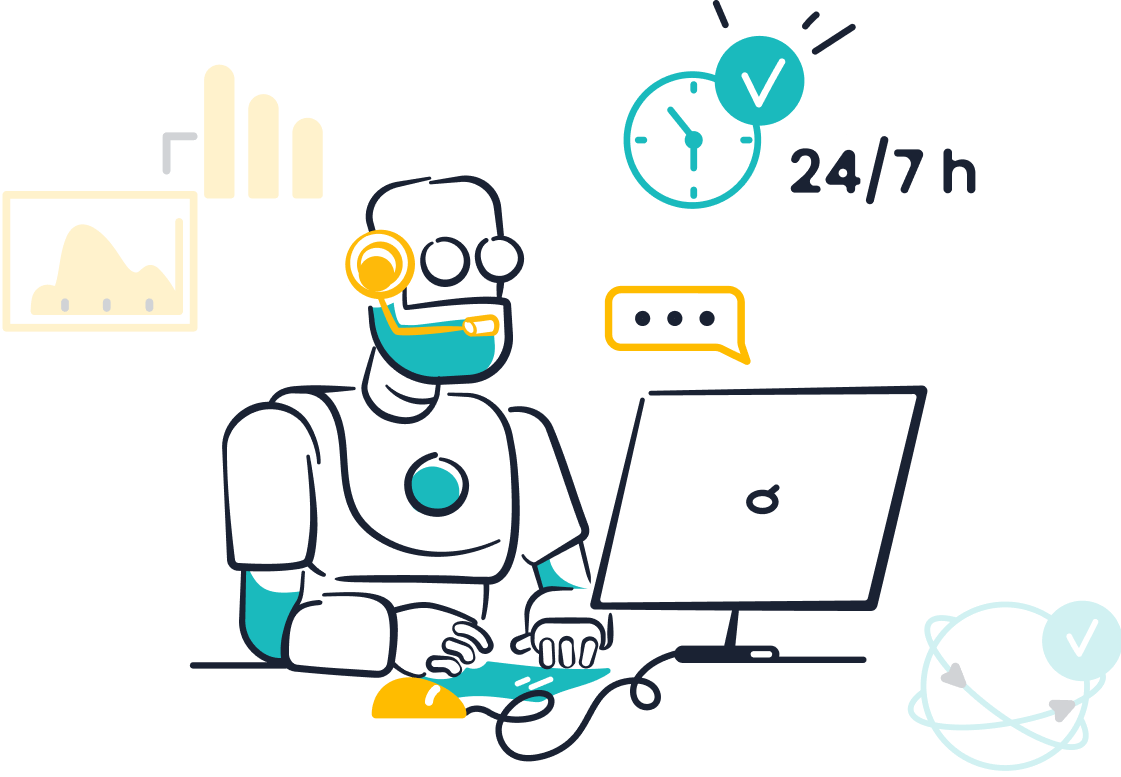
Self-service tools empower individuals to independently access information or complete tasks without requiring direct assistance. These tools enhance efficiency, saving time and effort for both customers and businesses. For example, 61% of customers prefer self-service tools for resolving simple issues, and 77% have a more favorable view of companies that offer such options. This trend highlights the increasing demand for convenience and streamlined processes.
By 2025, self-service tools will become even more vital as technology evolves and customer expectations continue to grow. Solutions like Sobot’s AI-powered chatbot showcase how automation can boost productivity by 70% while reducing costs by up to 50%. With 74% of respondents in a Gartner survey identifying self-service channels as essential, it’s evident that these tools are revolutionizing the future of customer experience.
Understanding Self-Service Tools
What Are Self-Service Tools
Self-service tools are solutions that allow you to independently complete tasks or access information without needing direct assistance. These tools are designed to simplify processes, save time, and enhance your overall experience. Whether it’s using an intelligent virtual assistant to answer questions or accessing a self-service portal to manage your account, these tools empower you to take control of your interactions.
For example, self-service kiosks in restaurants have become increasingly popular. They improve operational efficiency and provide a seamless customer experience. Similarly, in IT, the adoption of self-service solutions reached 69% in late 2021, showing their growing importance across industries.
Key Features of Customer Self-Service Tools
Customer self-service tools come with features that make them indispensable for modern businesses. Here are some key aspects:
- 24/7 availability: These tools ensure you can access support anytime, anywhere.
- Multichannel support: They integrate with customer self-service channels like chat, email, and social media.

- Ease of use: Most tools, like Sobot’s AI-powered chatbot, require no coding and offer intuitive interfaces.
- Personalization: They use data to provide tailored solutions, enhancing your satisfaction.
- Analytics and reporting: These features help businesses track metrics like task completion rates and user satisfaction ratings.
| Metric | Description |
|---|---|
| Task Completion Rates | Measures the percentage of tasks completed successfully by users. |
| Task Times | Records the time taken by users to complete specific tasks. |
| User Satisfaction Ratings | Assesses users' overall satisfaction with the self-service tool. |
How Self-Service Tools Work in Customer Service
Self-service tools streamline customer service by automating repetitive tasks and providing instant solutions. For instance, Sobot’s chatbot uses a knowledge base to answer common queries, freeing up human agents to handle complex issues. This approach improves efficiency and reduces response times.
These tools also enhance customer satisfaction by offering quick problem resolution. A recent survey revealed that 66% of customers try self-service before contacting support, and 88% expect businesses to provide a self-service portal. This demand highlights the importance of self-service capabilities in meeting modern expectations.
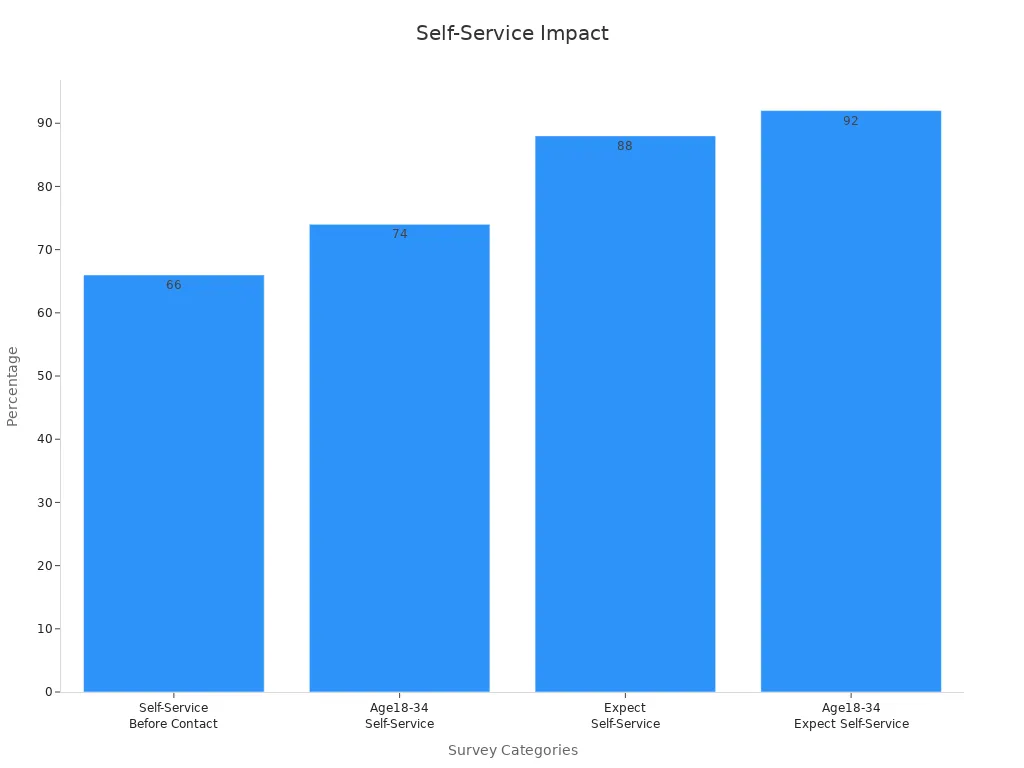
By integrating self-service tools like Sobot’s customer self service software, businesses can achieve higher first contact resolution rates and improve customer loyalty. These tools not only save time but also create a more satisfying experience for you.
Benefits of Self-Service Tools for Customer Experience
Enhancing Efficiency and Productivity
Self-service tools significantly improve efficiency and productivity by automating repetitive tasks and streamlining processes. For example, customer self-service options like chatbots and knowledge bases allow you to resolve issues without waiting for human assistance. This reduces response times and ensures faster resolutions.
Metrics such as self-service usage rates and resolution rates highlight the effectiveness of these tools. Many businesses report that 40% of live support requests can be resolved without agent involvement. Additionally, customer satisfaction scores often improve when self-service options are available, as they provide quick and convenient solutions.
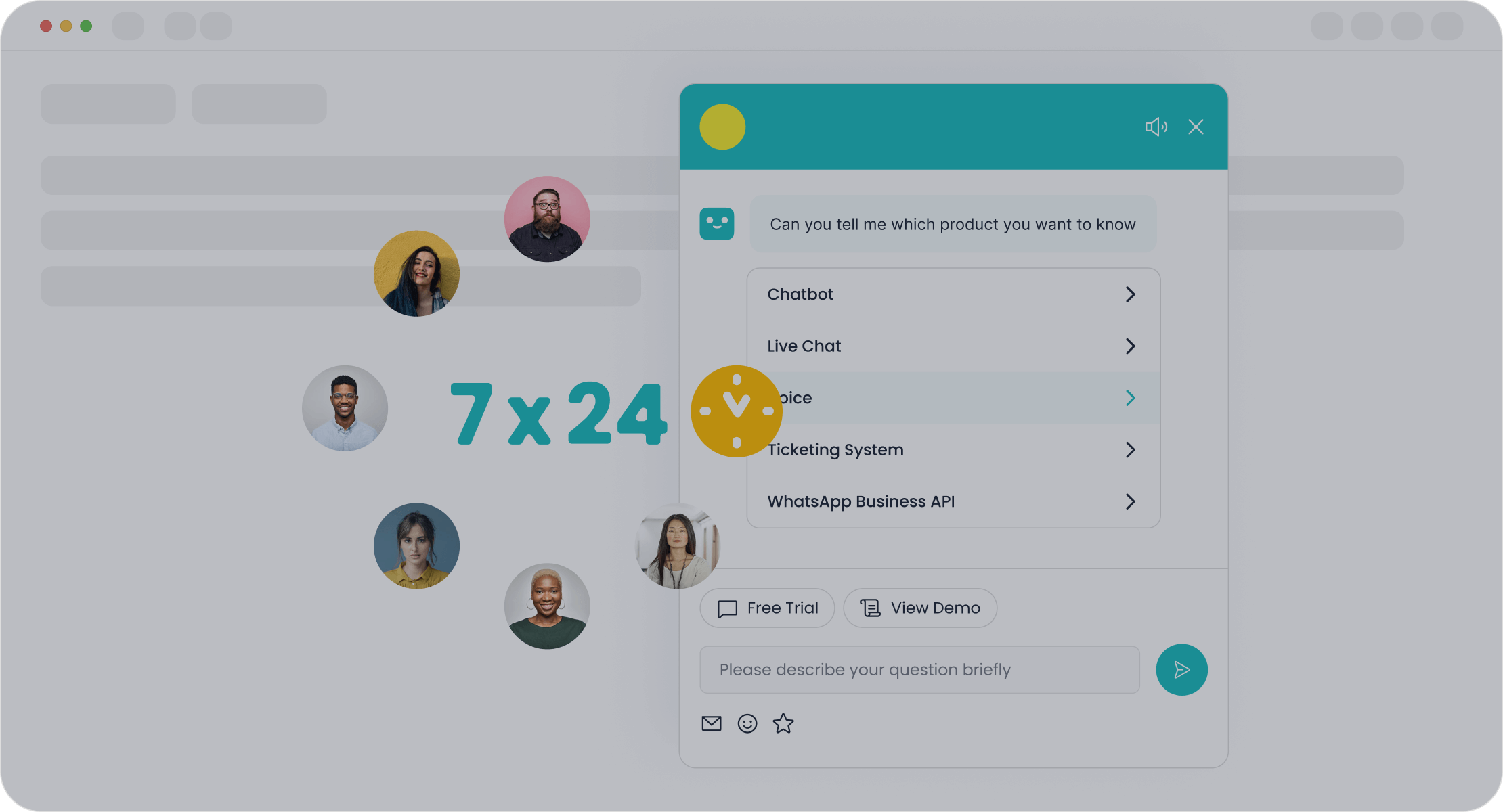
Sobot’s AI-powered chatbot exemplifies this efficiency. It operates 24/7, autonomously handling regular queries and assisting agents with complex issues. This approach boosts productivity by 70%, enabling businesses to focus on strategic tasks while maintaining high service quality.
Reducing Costs and Improving Scalability
Self-service solutions offer a cost-effective way to scale your operations. By automating routine tasks, these tools reduce the need for additional staff, saving up to 50% on operational costs. They also empower non-technical users to handle data tasks, minimizing reliance on specialized teams.
- Self-service platforms automate repetitive processes, cutting expenses.
- Businesses save resources by reducing dependence on technical teams.
- Automation allows professionals to focus on strategic initiatives.
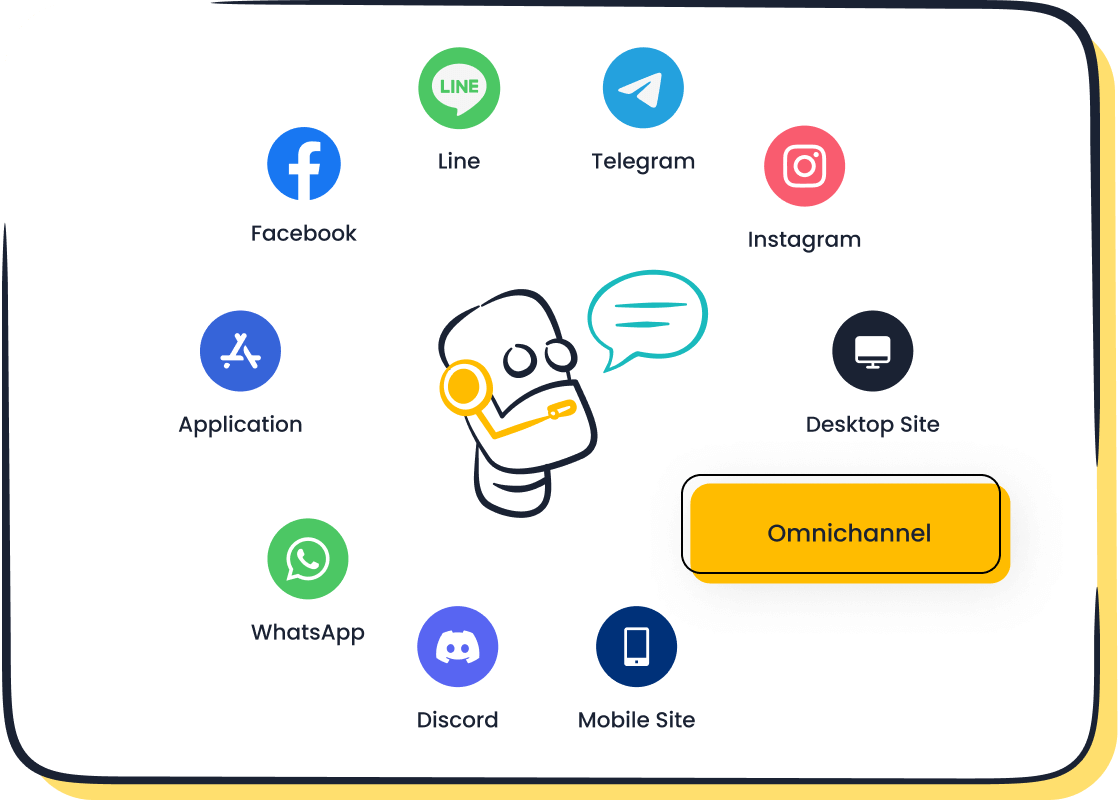
For instance, Sobot’s omnichannel solution integrates customer interactions across platforms, improving resource allocation and scalability. This unified approach ensures consistent service quality while optimizing costs.
Empowering Customers Through Self-Service
Customer empowerment is a key benefit of self-service tools. These solutions give you control over your interactions, allowing you to resolve issues independently. Studies show that 81% of customers attempt to solve problems on their own, and 90% expect brands to offer online self-service portals.
| Statistic | Source |
|---|---|
| 67% of customers prefer self-service to speaking to a support agent. | Zendesk (2013) |
| 73% of customers say valuing their time is the most important thing. | Forrester (2016) |
| 90% of customers expect brands to have an online self-service portal. | Microsoft |
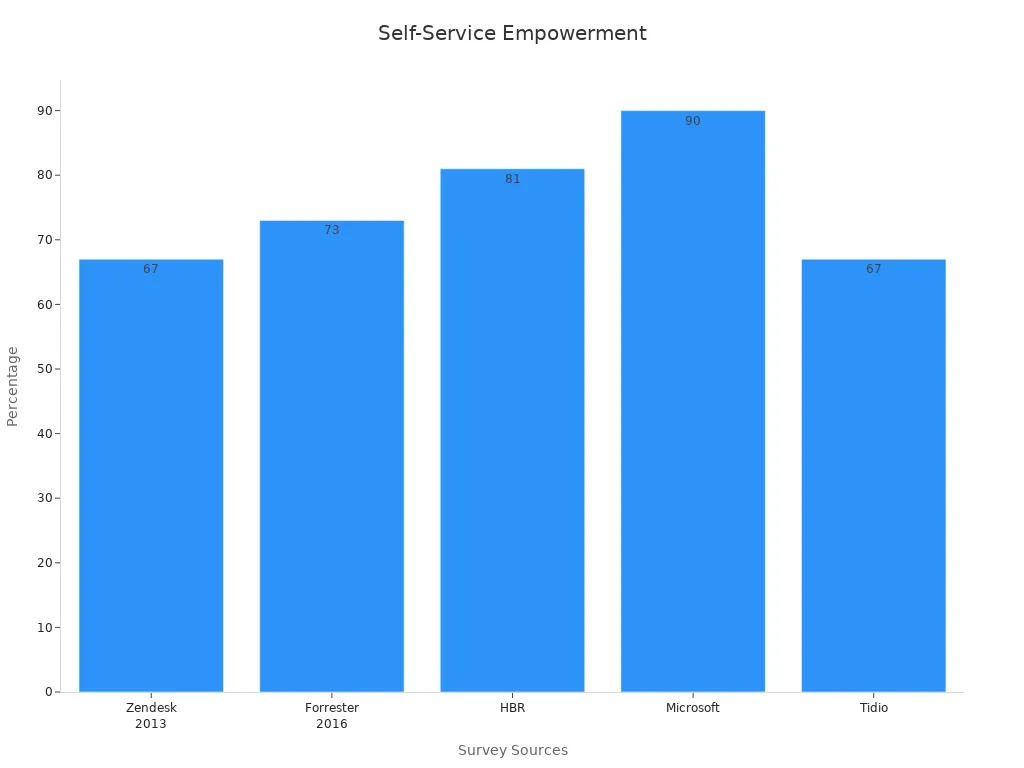
Sobot’s customer self-service tools, such as its chatbot and self-service portals, empower you to find answers quickly and efficiently. This not only enhances your experience but also builds trust and loyalty with the brand.
Boosting Customer Satisfaction and Loyalty
Customer self-service tools play a pivotal role in enhancing satisfaction and fostering loyalty. When you resolve issues independently, you experience faster resolutions and greater convenience. This empowerment builds trust and strengthens your connection with the brand.
Self-service solutions improve customer satisfaction by addressing problems efficiently. For example, clients report a 45% increase in Customer Satisfaction (CSAT) after adopting self-service tools. The Ministry of Health KPK implemented an electronic queue management system, reducing congestion and improving satisfaction levels. These examples demonstrate how self-service tools simplify processes and create positive experiences.
Loyalty also grows when customers feel valued. Studies show that 67% of customer churn could be avoided if issues are resolved on the first contact. Effective customer self-service options ensure quick resolutions, reducing frustration and encouraging repeat business. Between the Flags, an Australian specialty store, replaced traditional POS systems with self-service platforms during peak sales. This change improved retention and boosted revenue by 60-70%.

Sobot’s customer self service tools, such as its AI-powered chatbot, exemplify these benefits. The chatbot operates 24/7, autonomously handling regular queries and assisting agents with complex ones. This approach ensures faster resolutions and higher satisfaction rates. By empowering you to solve problems independently, Sobot’s solutions enhance your experience while fostering loyalty.
Self-service tools not only save time but also create lasting impressions. When you feel supported and valued, you’re more likely to return and recommend the brand to others. This cycle of satisfaction and loyalty drives long-term success for businesses.
Examples of Self-Service Tools in Action
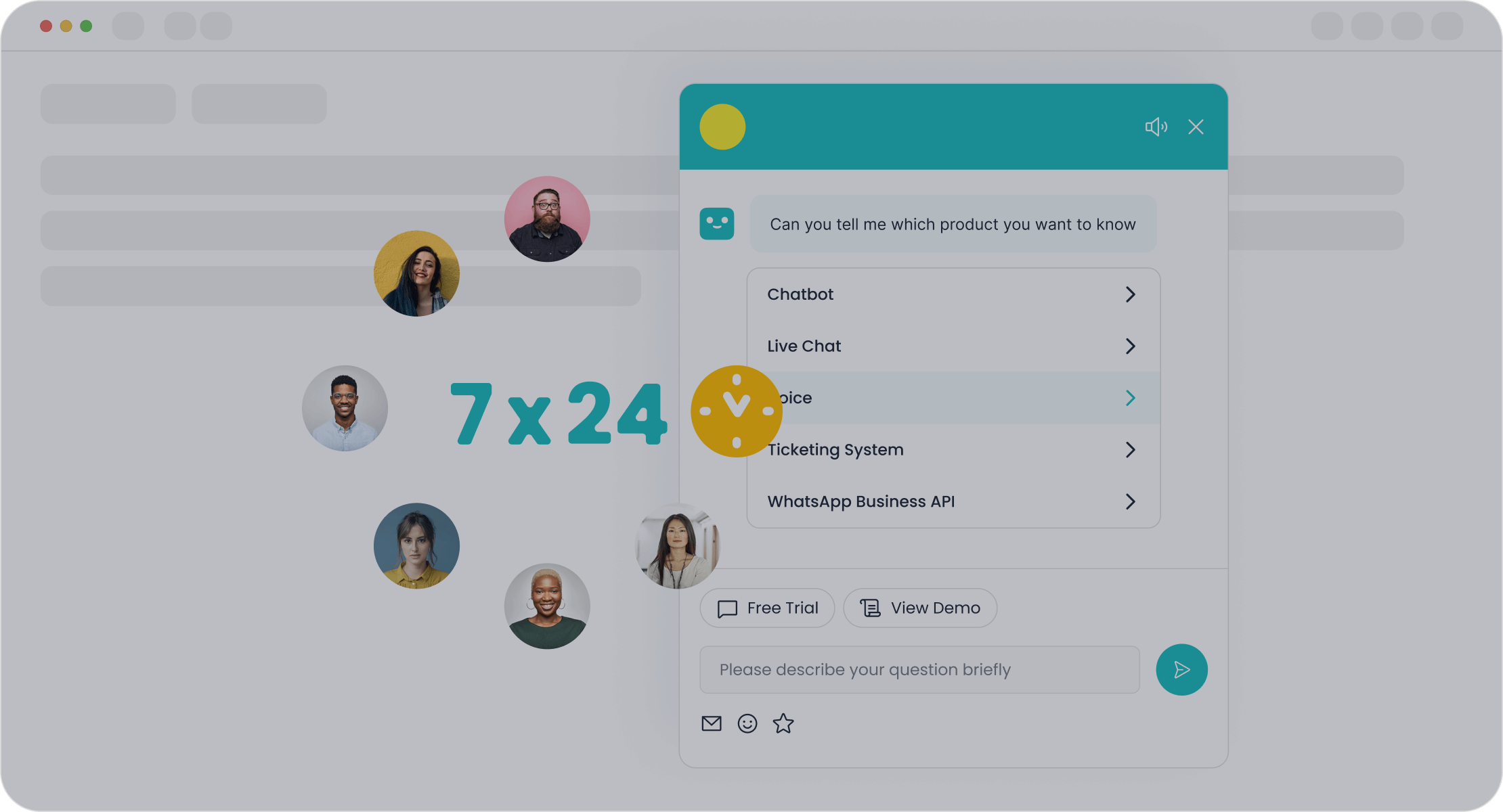
Sobot Chatbot: Revolutionizing Customer Self-Service
Sobot's AI-powered chatbot exemplifies how automated chatbots transform customer interactions. This self-service software operates 24/7, autonomously resolving routine queries while assisting agents with complex issues. By doing so, it reduces inbound discussion volume by 20% and achieves an impressive 96% positive feedback rate. Its accuracy in responses reaches 80%, ensuring customers receive reliable solutions.
The chatbot's ability to integrate with various self-service platforms enhances its versatility. It supports omnichannel communication, allowing customers to interact through their preferred channels like WhatsApp or SMS. This seamless experience boosts customer satisfaction scores (CSAT) to 97% and solves 85% of problems independently.
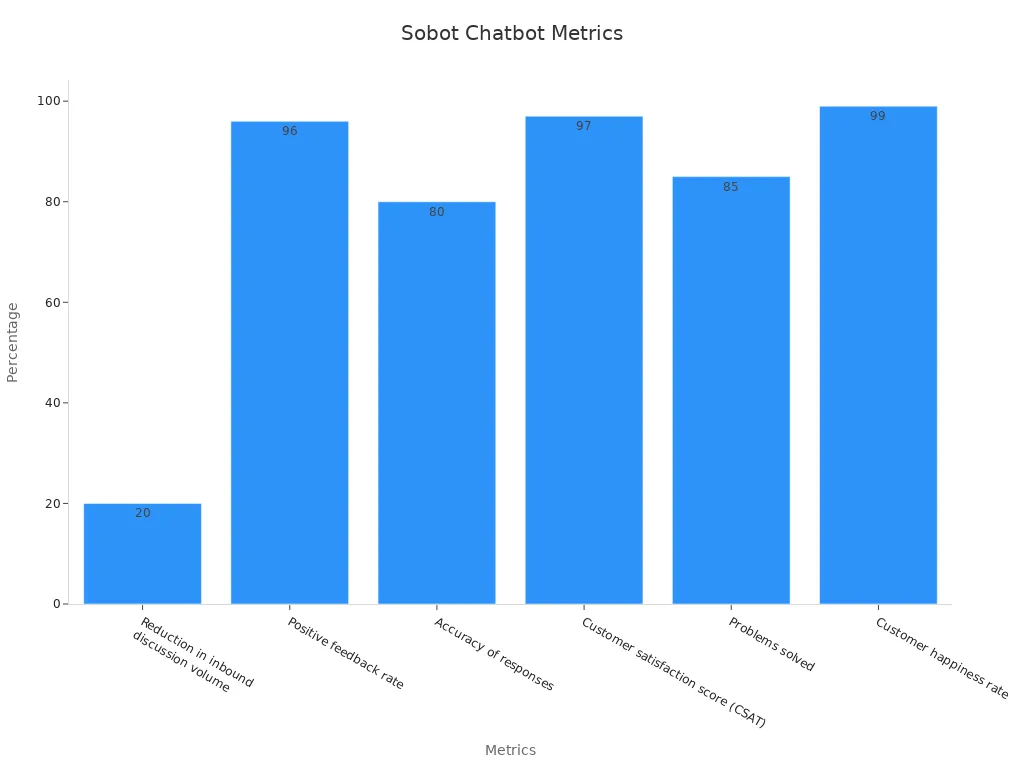
By leveraging Sobot's self-service software, businesses not only improve efficiency but also foster customer loyalty. The chatbot empowers users to find answers quickly, enhancing their overall experience.
Knowledge Bases and Help Centers
Knowledge bases and help centers are essential self-service tools that provide instant access to information. A well-designed knowledge base allows you to find answers 24/7, meeting the expectations of fast-paced consumers. For example, monitoring page views and time spent on articles helps businesses gauge user engagement. High satisfaction scores indicate that users find these self-service portals helpful.
These tools also address knowledge gaps by analyzing customer queries. For instance, GE Aviation's Self-Service Data initiative centralized data sources, improving accessibility and reliability. Similarly, self-service business intelligence tools enable non-technical users to make data-driven decisions using prebuilt templates and drag-and-drop functionalities.
By offering comprehensive resources, knowledge bases enhance customer support and satisfaction. They empower you to resolve issues independently, saving time and reducing frustration.
Interactive Voice Response (IVR) Systems
Interactive Voice Response (IVR) systems streamline customer support by automating call handling. These self-service tools guide you through menu options, enabling quick resolutions without human intervention. Metrics like call abandonment rates and first call resolution rates highlight their effectiveness. For example:
| Metric | Description |
|---|---|
| Call Abandonment Rate | A low rate suggests effective handling of calls; aim for under 5%. |
| First Call Resolution Rate | High rates indicate efficiency in resolving issues; strive for above 70%. |
| Average Handle Time | Maintaining an optimal range of 4 to 6 minutes ensures efficient resource use. |
| Customer Satisfaction Score | Gauges how satisfied customers are with their interactions, typically derived from post-call surveys. |
| Net Promoter Score | Measures customer loyalty based on the likelihood of recommending the service to others. |
IVR systems reduce wait times and improve resource allocation. By integrating these tools, businesses enhance efficiency and provide a smoother experience for you.
Self-Service Portals for Account Management
Self-service portals simplify account management by giving you the tools to handle tasks independently. These portals allow you to update personal information, track orders, manage subscriptions, and even resolve billing issues without waiting for customer support. This convenience saves time and enhances your overall experience.
One of the key advantages of a self-service portal is its efficiency. For example, businesses using these portals often achieve a ticket deflection rate of 20-40%. This means fewer support tickets are needed because customers resolve issues on their own. Additionally, resolution rates for self-service requests typically range between 70-90%, demonstrating their effectiveness. These metrics highlight how self-service portals reduce the workload on support teams while maintaining high service quality.
| Metric Category | Key Metrics | Measurement Method | Target Benchmarks |
|---|---|---|---|
| Efficiency | Ticket Deflection Rate | (Number of self-service resolutions / Total support tickets) * 100 | 20-40% |
| Effectiveness | Resolution Rate | (Issues resolved through self-service / Total requests) * 100 | 70-90% |
| Customer Satisfaction | CSAT Score | Customer surveys after using the portal | 4.5 out of 5 stars |
| Usage | Average Session Duration | Portal analytics tracking user session times | 3-5 minutes |
Self-service portals also empower you by providing 24/7 access to account management tools. Whether you need to reset a password or check your transaction history, these portals ensure you can complete tasks at your convenience. Sobot’s self-service software, for instance, integrates seamlessly with its knowledge base and chatbots. This integration allows you to find answers quickly while managing your account efficiently.
Moreover, self-service portals improve customer satisfaction. Surveys show that customers rate their experience higher when they can resolve issues independently. A well-designed portal not only meets your needs but also builds trust and loyalty. By offering intuitive interfaces and personalized options, these tools make account management a hassle-free experience.
Incorporating self-service portals into customer support strategies benefits both businesses and users. They reduce operational costs, enhance efficiency, and provide you with the autonomy to manage your account effortlessly. With solutions like Sobot’s software, businesses can deliver a seamless and satisfying experience.
Implementing and Optimizing Self-Service Tools
Designing User-Friendly Self-Service Solutions
Creating user-friendly self-service solutions requires thoughtful design principles. A well-designed interface ensures you can navigate and resolve issues effortlessly. For instance, companies that invest in user experience (UX) design often see reduced support costs. A Forrester study revealed that enhanced UX leads to fewer support requests, while a Zendesk case study showed a 20% drop in support tickets due to intuitive interfaces.
| Evidence Source | Key Finding |
|---|---|
| Forrester Study | Companies investing in UX see reduced support costs due to enhanced self-service capabilities. |
| Zendesk Case Study | Companies investing in proactive UX design saw a 20% reduction in support requests due to intuitive interfaces and clear self-service information. |
To optimize your self-service tools, consider these strategies:
- Centralize content into a single repository for easy access.
- Add AI-powered search engines to deliver accurate answers quickly.
- Regularly update resources to keep information relevant.
- Offer a native mobile experience to meet modern accessibility needs.
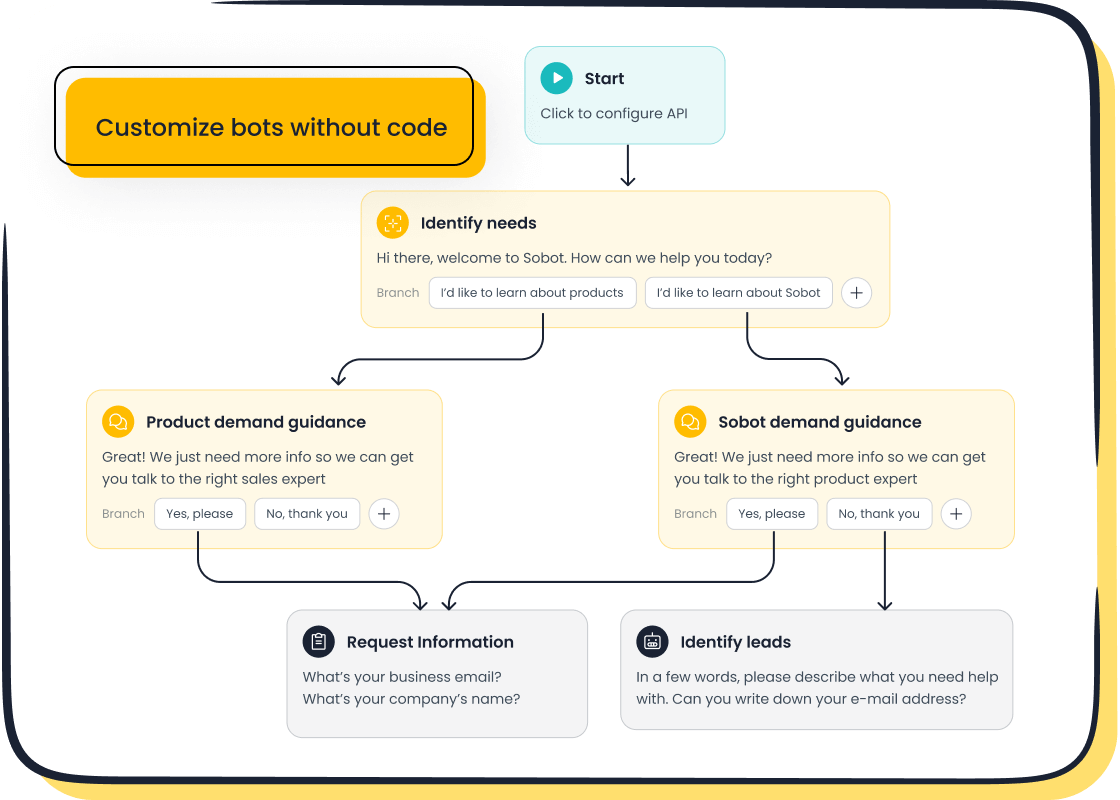
Sobot’s chatbot exemplifies these principles. Its intuitive, no-code interface allows businesses to deploy self-service solutions seamlessly, ensuring a smooth experience for users.
Encouraging Adoption of Customer Self-Service Tools
Encouraging the adoption of self-service tools involves demonstrating their value to users. Many businesses struggle to utilize analytics effectively, with 68% either lagging behind or relying on intuition. By leveraging data, you can identify gaps in your self-service offerings and improve them to meet user expectations.
Highlighting the benefits of self-serve support is essential. For example, Sobot’s omnichannel solution integrates customer interactions across platforms, making it easier for users to find answers independently. This approach not only reduces support requests but also builds trust by empowering customers to resolve issues on their own.
To drive adoption:
- Educate users about the tools available.
- Provide clear instructions and tutorials.
- Use feedback to refine and enhance the experience.
When customers see the efficiency and convenience of self-service options, they are more likely to embrace them.
Balancing Automation with Human Interaction
Balancing automation with human interaction ensures your customer service remains effective and empathetic. Automated tools like chatbots handle repetitive tasks efficiently, freeing agents to focus on complex issues. However, humanizing automated interactions is equally important. For example, Sobot’s chatbot uses personalized responses to create a more engaging experience.
Here’s how you can achieve this balance:
- Use technology to manage routine queries.
- Reserve human agents for sensitive or high-stakes issues.
- Train agents to handle a wide range of customer needs.
- Continuously monitor and improve both automated and human interactions.
By combining automation with human expertise, you can provide efficient yet personalized support. This approach not only enhances customer satisfaction but also strengthens loyalty.
Leveraging Analytics to Improve Customer Experience
Analytics play a crucial role in improving your experience with self-service tools. By analyzing data, businesses can identify areas for improvement and create more efficient processes. Metrics such as Customer Satisfaction Score (CSAT) and Customer Effort Score (CES) provide valuable insights into how well self-service solutions meet your needs.
| Metric | Description |
|---|---|
| Customer Satisfaction Score (CSAT) | Measures customer happiness with a specific interaction or overall experience using a numerical scale. |
| Customer Effort Score (CES) | Assesses the effort required by customers to complete tasks, indicating areas for process improvement. |
| Customer Lifetime Value (CLV) | Represents the total revenue expected from a customer over their relationship with the business. |
| Churn Rate | Indicates the percentage of customers who stop doing business, highlighting potential dissatisfaction. |
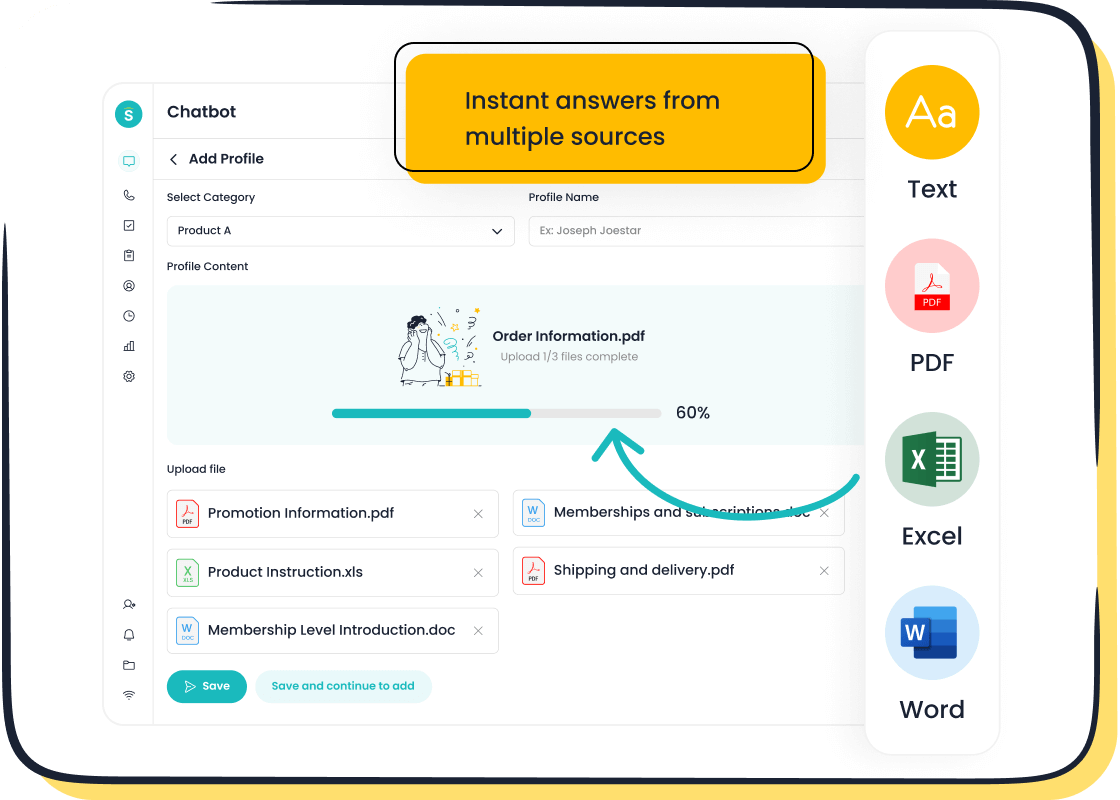
For example, a high CSAT score often reflects the effectiveness of self-service tools like Sobot’s AI-powered chatbot. This chatbot uses analytics to track resolution rates and customer feedback, ensuring continuous improvement. If you find a process too complicated, CES data can help businesses simplify it, making your interactions smoother and more enjoyable.
Analytics also help businesses predict trends and personalize your experience. By analyzing your behavior, companies can offer tailored solutions through self-service platforms. For instance, Sobot’s omnichannel solution integrates analytics to optimize resource allocation and improve service quality. This ensures you receive consistent and efficient support across all channels.
When businesses leverage analytics effectively, they not only enhance your satisfaction but also build long-term loyalty. Metrics like CLV and churn rate help companies understand your value and address potential issues before they escalate. This proactive approach ensures that self-serve support remains a reliable and satisfying option for you.
The Future of Self-Service Tools in 2025

Emerging Technologies Shaping Self-Service
Emerging technologies are transforming how you interact with self-service tools. Artificial intelligence (AI) and machine learning (ML) are leading the way, enabling tools like chatbots to handle complex inquiries. These advancements allow for instant responses, 24/7 availability, and seamless scalability. For example, AI-powered assistants can now recognize your identity, maintain context, and complete workflows, offering a personalized experience.
Other innovations include voice recognition and natural language processing (NLP). These technologies make interactions more intuitive, allowing you to communicate with systems as if you were speaking to a human. Retailers using conversational AI have reported up to a 30% reduction in customer service costs while improving response times. This trend highlights how technology is reshaping the future of self-service.
| Year | Market Size (USD) | CAGR (%) |
|---|---|---|
| 2025 | Over 10 billion | >20 |
| 2034 | 48.68 billion | 10.62 |
AI and Machine Learning in Customer Self-Service
AI and ML are revolutionizing customer self-service by automating repetitive tasks and enhancing efficiency. Chatbots, for instance, can manage multiple conversations simultaneously, reducing the workload for human agents. Companies like Camping World have seen significant improvements, such as a 33-second reduction in customer wait times. Similarly, IONOS achieved a 68% increase in sales conversion rates after implementing AI-driven solutions.
These tools also improve customer satisfaction. Research shows that organizations using virtual assistants have reduced calls, chats, and emails by up to 70%, while satisfaction levels increased by 20%. Sobot’s AI-powered chatbot exemplifies this impact. It operates 24/7, autonomously resolving queries and assisting agents with complex issues, ensuring a seamless customer experience.
| Company | Improvement Metric | Outcome |
|---|---|---|
| Camping World | Reduced customer wait times | 33 seconds improvement |
| IONOS | Sales conversion rates | 68% increase |
| Various | Reduction in calls, chats, and emails | Up to 70% reduction |
Trends in Customer Expectations and Experience
Customer expectations are evolving rapidly. Today, 69% of customers prefer resolving issues on their own before contacting support. Additionally, 88% expect businesses to offer self-service portals that are mobile-friendly. These trends emphasize the growing demand for convenience and accessibility.
Self-service tools are meeting these expectations by providing instant solutions and reducing effort. For example, Sobot’s omnichannel solution integrates customer interactions across platforms, ensuring you can access support through your preferred channel. This approach not only enhances efficiency but also builds trust and loyalty.
| Statistic | Description |
|---|---|
| 69% | Customers prefer to resolve issues on their own before contacting support. |
| 88% | Customers expect organizations to have a self-service portal, ideally accessible on mobile devices. |
As technology advances, self-service tools will continue to shape the customer experience, making interactions faster, easier, and more satisfying.
Self-service tools empower you to independently resolve issues and access information, offering convenience and control. These tools enhance efficiency by automating repetitive tasks and improving first contact resolution rates. Metrics like Customer Satisfaction Score (CSAT) and Net Promoter Score (NPS) highlight their ability to boost customer satisfaction and loyalty. For example, high CSAT scores reflect positive interactions, while strong NPS values indicate increased trust and advocacy.
The transformative impact of self-service tools lies in their ability to streamline operations and reduce costs. Businesses like Sobot leverage these tools to provide 24/7 support, ensuring quick resolutions and seamless experiences. As customer expectations evolve, self-service will play a critical role in shaping strategies for 2025, enabling businesses to deliver faster, more personalized service.
Self-service tools are not just a convenience; they are a necessity for modern customer service excellence.
FAQ
What are self-service tools, and why are they important?
Self-service tools let you solve problems or access information independently. They save time and improve efficiency. For example, Sobot’s AI-powered chatbot operates 24/7, resolving routine queries autonomously. These tools enhance customer satisfaction by offering quick solutions without waiting for human assistance.
How do self-service tools improve customer satisfaction?
Self-service tools empower you to resolve issues quickly. Studies show that 81% of customers prefer solving problems on their own. Tools like Sobot’s chatbot provide instant answers, reducing frustration and building trust. This convenience fosters loyalty and ensures a positive experience.
Can self-service tools reduce business costs?
Yes, self-service tools automate repetitive tasks, reducing the need for additional staff. Sobot’s chatbot, for instance, saves up to 50% on operational costs by triaging queries 24/7. This efficiency allows businesses to allocate resources strategically while maintaining high service quality.
Are self-service tools easy to use?
Most self-service tools, like Sobot’s chatbot, feature intuitive interfaces requiring no technical expertise. You can navigate them effortlessly to find answers or complete tasks. Their user-friendly design ensures accessibility for everyone, enhancing your overall experience.
How do self-service tools support scalability?
Self-service tools handle high volumes of queries without compromising quality. Sobot’s omnichannel solution integrates customer interactions across platforms, ensuring consistent service as businesses grow. This scalability allows companies to meet increasing demands while maintaining efficiency and customer satisfaction.
See Also
Enhancing Efficiency With AI-Driven Customer Support Solutions
Ten Strategies to Improve Live Chat Customer Experience
Increasing E-commerce Customer Happiness Through Chatbot Technology
